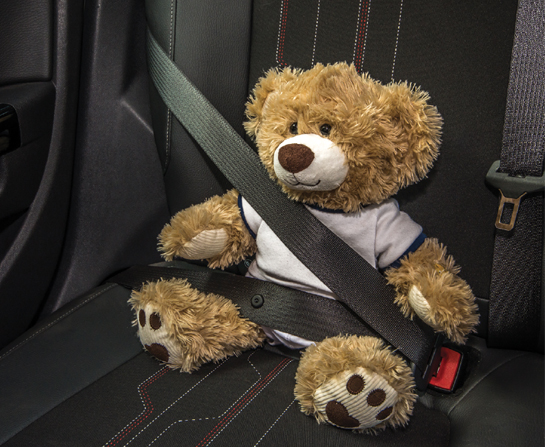Safety Tips
May 7, 2022 Return

Children do not understand danger. They are going to fall, tumble and slip. This is all part of being a child. The more mobile a child is, the more adventurous they are to explore their environment without heeding the dangers that may be lurking about. As parents, our biggest concern is the safety of our children. We want to ensure that our child is able to explore and be a child without having injuries or accidents.
Children are sometimes left at home with minimal adult supervision especially when both parents are at work. This can expose them to unnecessary dangers both at home and outdoors. Awareness of child safety can help prevent accidents or injuries from occurring and emphasize the importance of safety to children.
Supervision by an adult may be active or passive. Active supervision is when there is constant watching and listening to the child. This is the best way to prevent injuries as we are there to hopefully prevent a fall or limit a child’s wandering to a safe area. However, this is not always possible. A child can wander off in the blink of an eye and in a busy shopping mall, they may be hidden by racks of clothes or aisles of food. Hence, the best supervision is based on knowing what your child is capable of, setting up age appropriate toys or equipment to play with and exposing them to safety rules from an early age.
In your home, walk around every part of your house and ask yourself, “Can anything in this room pose a danger to my child?” If the answer is yes, remove the said item or block off that particular area. You can even do this in your porch, garden or the surrounding areas of your house.
Here are some tips for keeping your child safe in different situations.
Home Safety

- Block off dangerous zones (e.g. kitchen and staircase) with child safety gates.
- Lock balcony doors (with additional child safety locks).
- Install railings or grills over windows especially if you live in a high-rise building.
- During meals, ensure that foods are an appropriate size for your child and he or she is strapped and supervised in a high chair.
- Check all your plug points and electricity sockets to ensure there are no dangling wires, broken sockets or loose connections.
- Keep dangerous plants (e.g. those with thorns, poisonous plants) out of reach of younger children.
- Ensure the water in pots is regularly cleared to prevent insects from breeding.
- Ensure the safety fence around water features or swimming pools is locked or secured and built to the correct dimensions.
- Store dangerous items (e.g. matches, candles, knives, medication) out of reach or locked away in a cupboard that cannot be reached by any child.
- Ensure that your child’s toys have no small parts (which can be choking hazards) or sharp edges.
- Ensure that kitchen stoves or ovens have a safety feature to avoid accidental gas leaks or burns.
- Practice safe cooking – never leave cooking unattended and avoid putting children on kitchen shelves while you cook.
- Encourage the use of smoke alarms or keep a fire extinguisher at home.
- Have an escape plan that is rehearsed by the whole family in case of a fire.
Road or Travel Safety

- Teach and remind your child of the correct way of crossing a road.
- When you drive, pay attention to zebra crossings. Slow down near schools or playgrounds and adhere to the speed limit of 30km/hour in residential areas.
- Even though it is not compulsory for children to be in a car seat in Malaysia, it is best for those below 12 to be in an age-appropriate car seat as accidents can happen at any time.
- Never place children below 12 years of age in the front seat as the airbag may actually harm them if an accident does occur.
- Always wear your own seat belt to set an example to your children to buckle up each time they enter a vehicle.
- If your child rides with you on a motorbike or bicycle, ensure they wear a helmet that is of the correct size and properly worn.

Play Safety

Wear the correct protective gear for the sport activity.
Ensure the protective gear is well kept, fits properly and worn every time.
Pay close attention to the weather:
- If it rains, get to shelter to avoid lightning strikes or catching a cold.
- If it is too hot, remove excess layers of clothing and ensure hydration is maintained by drinking lots of water.
- In a sudden disaster, your child should stay close to teachers or coaches and follow their instructions to get to a safe area.
- When at a playground, smaller children should always be supervised to ensure they do not get pushed over by bigger children.
- Check on the playground equipment to ensure there are no rusted or broken rails.
- Read the safety signs for each playground as they may differ.
- Your child should play on equipment that is suitable for his or her age.
- Playground surface material should be safe and soft, not muddy and dirty.
Safety is a combined effort by all to ensure that our children have a happy play time or holiday. We would do well to remember that a child’s safety is the responsibility of the adults and not the child. Set clear and simple safety rules for a child but remember that this does not replace proper adult supervision.
A child’s safety is the responsibility of adults, not the child.
If you like this article, do subscribe here.
